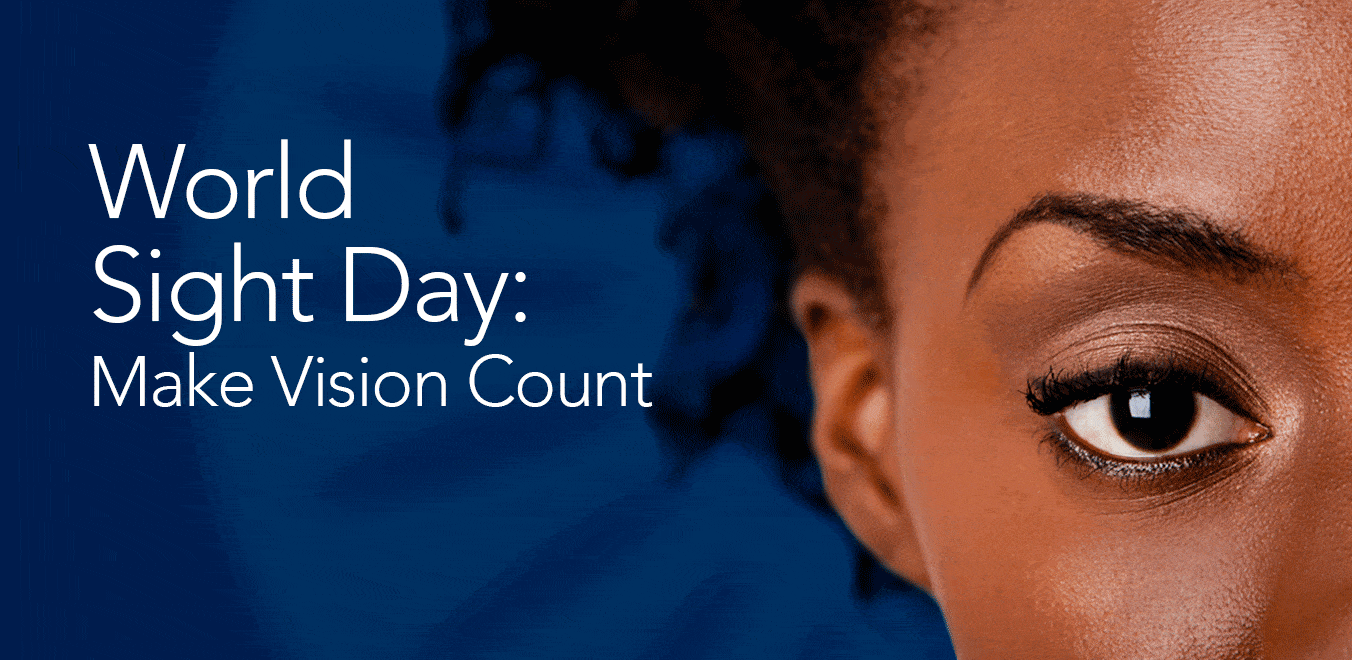
World Sight Day is the most important annual event for raising eye health awareness. It is a perfect opportunity to raise awareness amongst all kinds of people, from relatives of those with vision problems to those who rarely have an eye test, on a global level. This year the day is being celebrated on October 12 and focuses on vision problems which affect the lives of people all over the world, in both developed and developing countries. The time has come to fight for the right to sight and to demand that governments commit to offering better access to ophthalmological care, both preventative and therapeutic.
Around 180 million people suffer from some kind of visual impairment, with 40-45 million of them being blind. Given the increase in world population and in the percentage of elderly citizens, this figure is expected to double by 2020.
Amongst those suffering from blindness, 4 out of 5 (80%) have an avoidable type of blindness, either because it was caused by preventable conditions (20%) or because they could receive treatment (60%) and recover their vision. For this reason, eye tests and surgical procedures are essential for diagnosing and, in many cases, reversing blindness. Every five seconds someone in the world goes blind and every minute a child loses their sight. It is estimated that this corresponds to seven million people per year.
In order to fight against these shocking statistics, WHO (World Health Organization) and the IAPB (International Agency for the Prevention of Blindness) jointly launched the “VISION 2020 – Right to sight” initiative in 1999. Its objective is to eliminate avoidable blindness by 2020. Since then, over 40 countries have approved programmes designed to contribute to this global initiative’s objective.
The causes of avoidable blindness are often associated with poverty and lack of access to quality ophthalmological care. Of all sufferers of blindness worldwide, 90% live in developing countries. Those in these countries are between five and ten times more likely to go blind than those who live in developed countries.
What can we do to fight against these devastating statistics? Firstly, we need to raise awareness of the importance of having regular eye tests, especially amongst vulnerable groups such as young people, school-age children, the elderly and those with diabetes. This is why the slogan this year is Make vision count. The most important thing is to raise awareness of the problem and the statistics so that people can understand the current situation and how best to act. It is essential that, regardless of the condition (cataract, glaucoma, diabetic retinopathy etc.), this information reaches as many people as possible. This will enable us to improve care, early diagnosis and prognosis for affected patients and reduce the social, economic and human consequences of blindness.
This year, the IAPB is using #MakeVisionCount to coordinate its promotional activities and encourage people to take part by sharing their stories under this hashtag, so that the initiative can reach the largest number of people possible.

Contact us or request an appointment with our medical team.